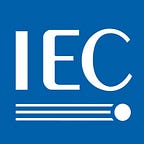Living the smart way
Standardization helps achieve an efficient, safe, and reliable IoT
by Antoinette Price
The internet of things (IoT) is part of everyday life, facilitating daily activities and improving the efficiency of work processes, saving both time and money thanks to billions of connected, “sensorized” devices and systems. In the case of healthcare, it can save lives.
Connected everywhere
Cities and their infrastructures including transport, energy, buildings and homes are becoming smart, in order to boost energy efficiency and enhance how they function. The well-being of citizens and the economy both benefit from this.
Intelligent collaborative manufacturing systems enable businesses to respond in real time, to meet changing demands and conditions in factories, supply networks, and customer needs, while on the rural front, farmers can streamline crop and animal management, using smart phones and apps.
IoT is also changing how other industries work, such as automotive, healthcare, entertainment and retail.
In all these areas, this technology contributes toward building a more sustainable world.
The need for standards
The IoT is comprised of diverse and evolving technologies and stakeholders involved in a wide range of applications. For this reason, it is paramount to provide a minimum level of interoperability. This would allow all the components to function rapidly and reliably, as they gather, exchange and analyse vast amounts of data. IoT Standards will also facilitate the growth of IoT devices, systems and services market.
IEC and ISO Joint Technical Committee (ISO/IEC JTC 1) develops International Standards for information and communication technologies for business and consumer applications. Given the great importance and impact of IoT, in 2016, JTC 1 established a new Subcommittee ISO/IEC JTC 1/SC 41: Internet of Things and related technologies, which has consolidated and expanded the activities of former Working Groups (WG) 7 and 10.
The main focus of SC 41 is to establish a standardization programme, and provide guidance to JTC 1, IEC, ISO and other entities developing IoT-related applications. Its scope also covers sensor networks and wearables technologies.
In addition to the Standards already published for sensor networks, SC 41 is developing base or horizontal Standards for IoT reference architecture, vocabulary, and interoperability. These can be used by industry and any application-related standardization technical committee, where IoT technology is used as an enabler.
By ensuring consistency and avoiding duplication, businesses and manufacturers can save time, effort and money.
A year of achievements for SC 41
e-tech caught up with François Coallier, Chair of SC 41, to hear what has been achieved during the first year.
A great deal of the activity has been administrative, setting up the work structure, governance and strategic planning. All of this was done in parallel with the continuation of the technical work inherited from the former WGs, which totals 11 projects.
“We created six study groups (SG) at the first plenary: edge computing, industrial IoT, real-time IoT, trustworthiness, wearables and IoT use cases. All groups are progressing.
“The edge computing group was mandated to help enable the recommendations of the Edge Intelligence White Paper. Based on the recommendations of this SG, SC 41 initiated a project in this area at its last plenary meeting in New Delhi, India.”
The importance of building synergies
Many players are involved in developing the component devices and systems that make up the ubiquitous IoT, as well as their related Standards. An important part of SC 41 activities will be to liaise, with other IEC technical committees (TCs) and subcommittees (SCs), as well as with other standards development organizations (SDOs) and groups within the industry.
SC 41 already liaises with ISO and ITU-T, and the Advancing Identification Matters (AIM), Industrial Internet Consortium (IIC), Open Connectivity Foundation (OCF), Open Geospatial Consortium (OGC), Global Language of Business (GS1), and the International Council on Systems Engineering (INCOSE). “We have to be systematic and work with a lot of different people, so this will be a big challenge as there are around 24 IEC TCs and SCs,” says Coallier.
“For example, our edge computing work will liaise with ISO/IEC JTC 1/SC 38 for cloud computing and our trustworthiness study group will work with ISO/IEC JTC 1/SC 27 on IT security techniques, while our wearables study group will be in regular contact with IEC TC 124 which covers wearables and their technologies.
“Then there are our Systems Committees, for active assisted living (SyC AAL), smart cities (SyC Smart Cities) and the newly established SyC Smart Manufacturing. This year we also hope to expand our external liaisons.”
This is an edited version of an article appearing in the February 2018 edition of e-tech. Antoinette Price is a regular contributor.
